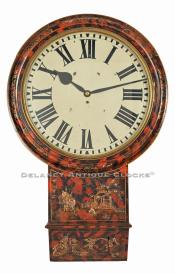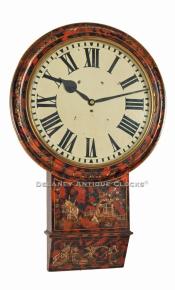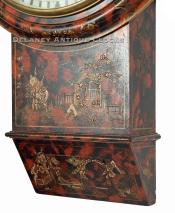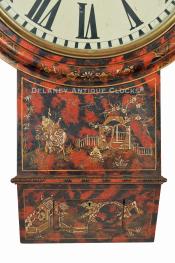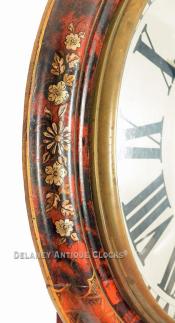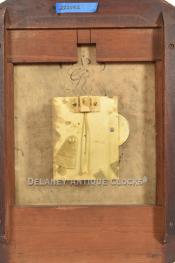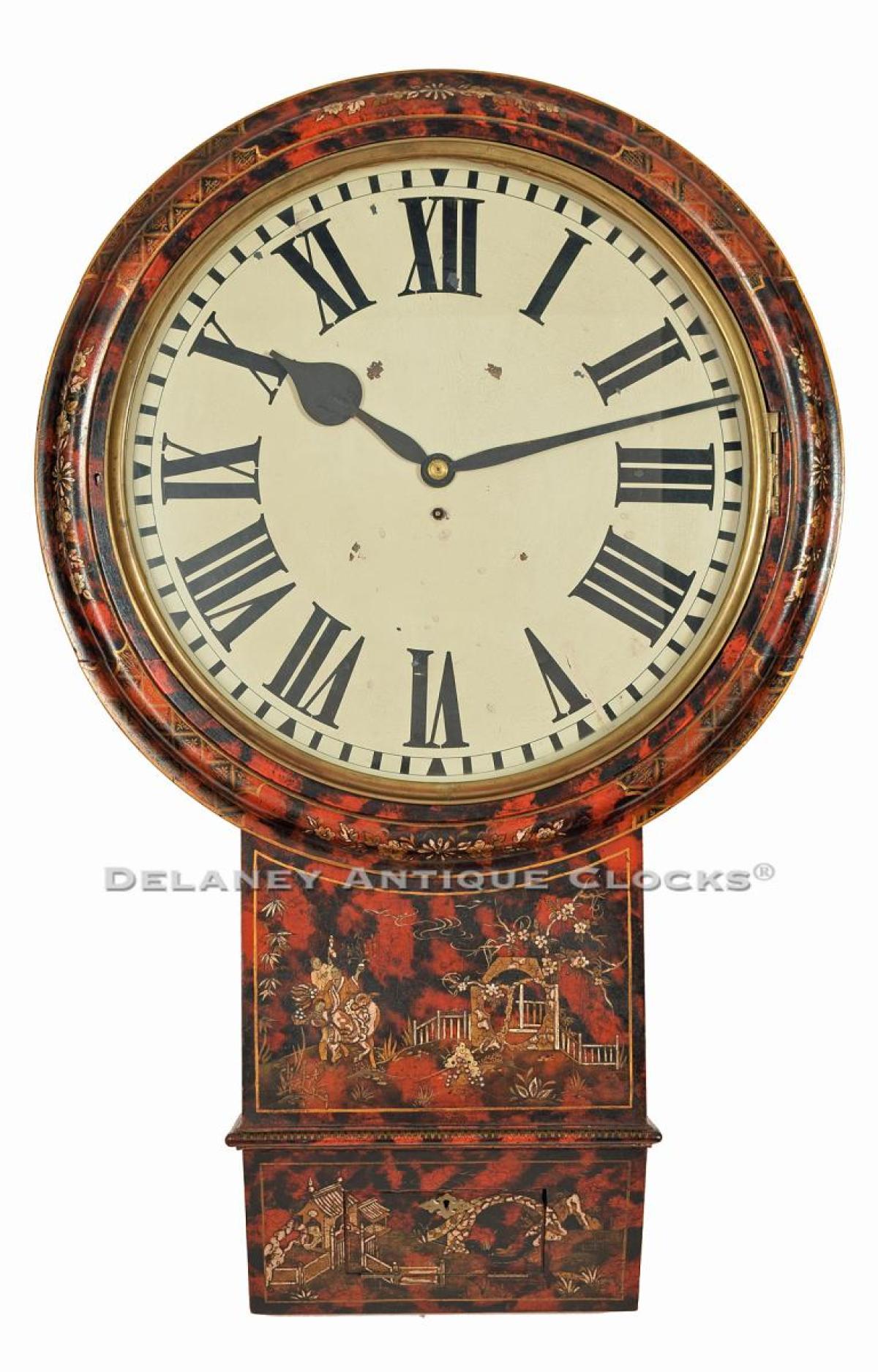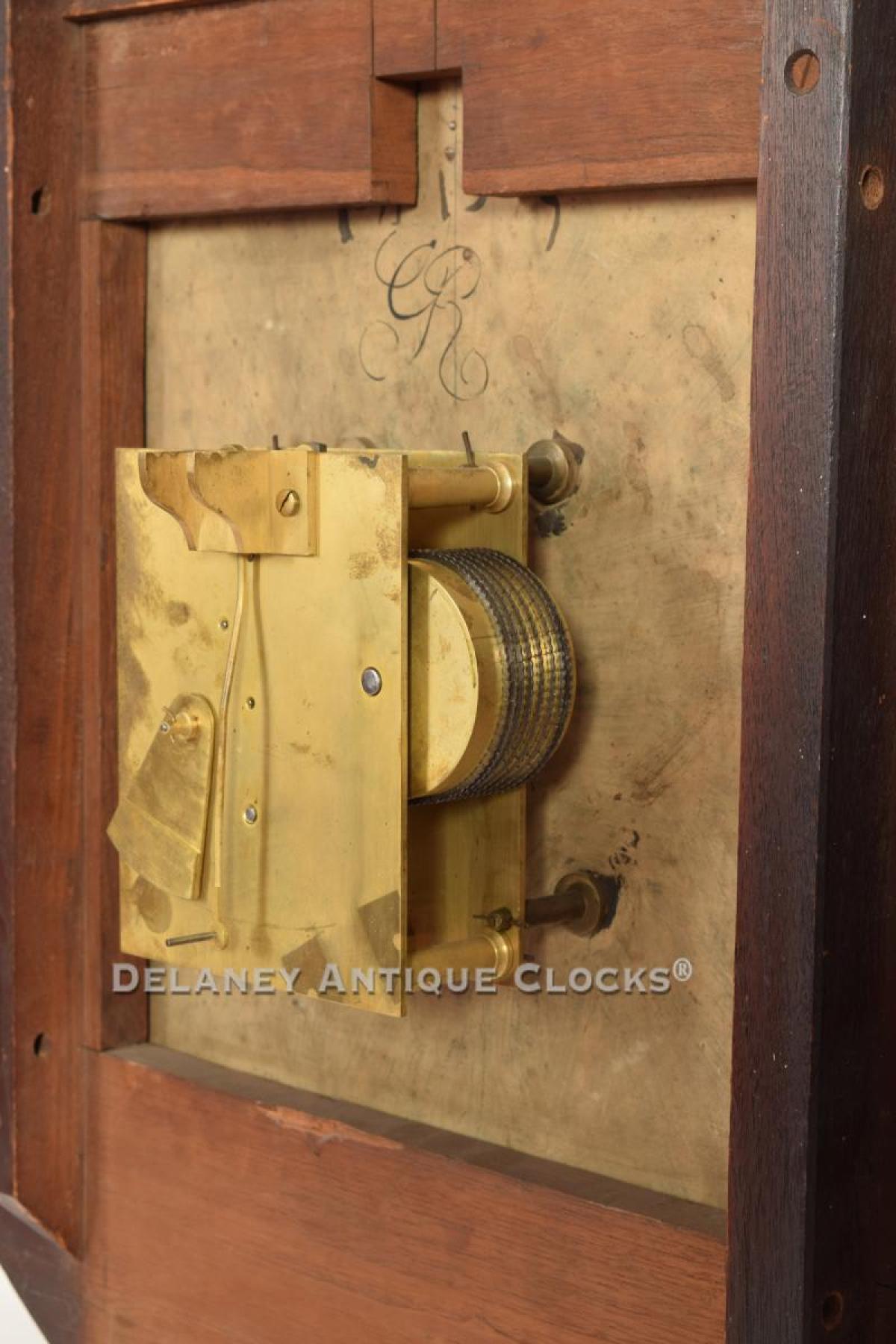Act of Parliament Dial or Tavern clock. UK origin. 222032.
This impressive wall clock form is commonly called an Act of Parliament clock today. In 1797, this term or title came about due to a five-shilling tax levied on all clocks. Prime Minister William Pitt introduced this tax to raise desperately needed money to help fund the war against the French. This tax proved highly unpopular among clockmakers and clock owners and was repealed after only nine months. The result of the tax practically obliterated the clock trade overnight. The marketplace for clocks shrunk dramatically, and sales of clocks and watches fell considerably. Owners of such items began to hide their clocks, and in some instances, they threw existing clocks away. In an attempt to attract patrons, tavern owners began to display large clocks like this example to attract patrons. The thought was that patrons would come into their establishments to check the time. These owners hoped that once through the door, they would stay and patronize their establishment. Interestingly, these clocks existed before the tax was levied. They just became more popular after the tax.
Tavern clocks in the UK are generally accepted as the 'Ultimate wall clocks.'' They are now considered somewhat rare clocks, and the vast majority of those that survive are in either poor condition or fully restored condition because of the fragile nature of the 'japanning' process. The application of building up gesso on a wooden surface is prone to shed or fall off over time. In addition, the conditions in which these clocks were situated were not favorable to preserving this applied decoration.
This wooden case clock is decorated in lacquer work. This decoration is called several names in the trade. Some of the more popular names are Chinoiserie decoration, Japanning, and lacquer work. This effect is a process where gesso is applied to the case in certain areas to provide some depth to the designs. These include traditional Chinese or Japanese scenes and florals. This example features the intricate forms of birds, florals, buildings, people, and geometric designs. These are applied to a red and black base coat or background. This base coat is referred to as tortoiseshell decoration.
This dial clock is in very good condition. This case form is designed to hang on a wall. This fine example features a large zinc dial that measures approximately 23 inches in diameter. The large Roman-style hour numerals positioned inside the closed minute ring can be read from across the room. Nicely formed painted black steel hands indicate the time. This dial and wooden bezel are secured to the case with four pegs. The bezel is cast in brass. It supports glass that protects the dial. The wooden bezel is nicely shaped. The drop section is fitted with a large door. The door opens to access the pendulum for adjustment.
The movement is constructed in brass. The two rectangular-shaped plates are secured by four turned posts. The five-wheel time-only train features a recoil escapement and is powered by a coil spring. It also incorporates a fusee in the design. It is of excellent quality and designed to run for eight days on a full wind.
This clock was made circa 1800.
The case has the following dimensions: 46.5 inches long, 30 inches wide, and 7 inches deep.
Do you own a public business or have an office area where potential clients gather to obtain your services? If you do, this clock will serve you well. Clocks like this were designed not only to tell time but they are also beautiful pieces of furniture. We have installed numerous clocks in public rooms or offices over the years. The owners of these clocks often are amazed at the comments they receive. As a result, they consider them to be "Ice breakers." We believe this to be true and have numerous clocks mounted on the walls of our shop.
It is inventory number 222032.


